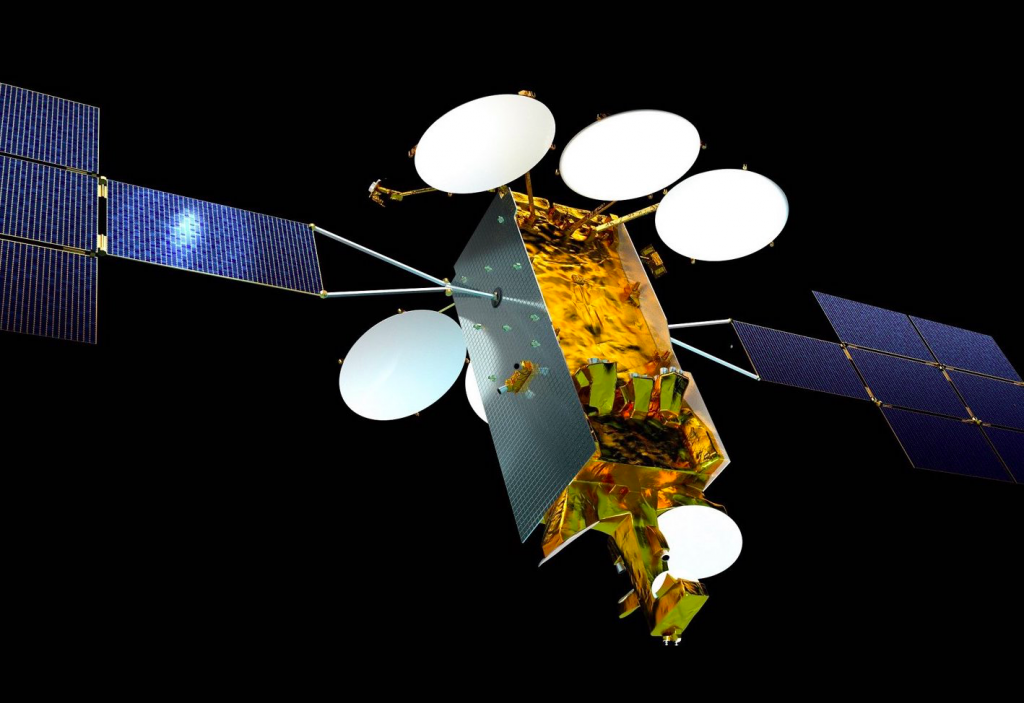Aerospace manufacturer Airbus has 3D printed a total of 500 components for Eutelsat’s Eurostar Neo series of relay satellites.
By additive manufacturing the radio frequency (RF) parts, including multi-waveguide blocks and switch assembly networks, Airbus was able to reduce the lead time and costs of their assembly. Once fitted to Eutelsat’s Hotbird 13F and 13G satellites, the parts will effectively reinforce the firm’s broadcasting services in Europe, the Middle East and North Africa.
“This is recognised as the first large-scale deployment of RF products using the ALM (Additive Layer Manufacturing) process,” said Gareth Penlington, Hotbird Payload Manager at Airbus. “It puts us in an industry-leading position for the technology’s application in producing radio frequency components.”

Airbus’ additive aerospace prowess
For over five years now, Airbus has utilized 3D printing to design and manufacture both prototype and end-use parts, deploying them within different areas of its business. For instance, the company has consistently used the technology to boost its core aviation division, 3D printing A350 components as well as improving its aircraft maintenance program.
To further its application of additive within end-use scenarios, Airbus has also engaged in aerospace R&D. Working with software developer Sigma Labs, the firm has validated metal PBF printing for serial aerospace production, while more recently, it partnered with Satair to create what it claimed to be the “first certified metal printed flying spare part.”
Elsewhere, Airbus has set its sights even higher, targeting orbital satellite applications of its technologies. By collaborating with 3D printer manufacturer 3D Systems, for example, the company has previously fabricated redesigned RF filters for relay antennas, improving their surface topology, while reducing their weight and expense in the process.

3D printing Eutelsat’s Eurostar Neo
While Airbus has created parts for Eutelsat’s antennae before, 3D printing elements of the firm’s 172B satellite back in 2017, its latest project is noteworthy because it has now entered into high-volume production. As part of the program, a total of 500 waveguides and assembly networks are being fully-manufactured at Airbus’ Portsmouth base, from concept design right through to final qualification.
Once signed-off, the components will be fitted to two of Eutelsat’s ‘Hotbird’ spacecraft, and launched into Low Earth Orbit (LEO) to support the firm’s communication services. The company claims that its satellite boasts “increased efficiency and performance” compared to other platforms, and that its “payload-centric design” effectively increases mission capacity.
Airbus has already completed the first batch of 3D printed parts for the project and shipped them to its Defence and Space facility in Toulouse, France, for assembly. In Portsmouth, meanwhile, the company is still constructing the second Hotbird communications module, where it’s expected to undergo testing later this month.
Stratospheric 3D printed parts
Using 3D printing to create optimized satellite parts is becoming an increasingly common application of the technology, and several firms have done so in the last few months alone.
Solid-state metal 3D printing specialist Fabrisonic has deployed its proprietary UAM technology to create more efficient heat exchangers for NASA’s Jet Propulsion Lab (JPL). The upgraded devices are designed to better regulate the temperature of satellites operating in the cold vacuum of space.
3D printing service provider 3DCeram has also helped French Space Agency (CNES) spin-out Anywaves to produce ceramic antennas for its small satellites. 3DCeram effectively provided consultancy on the design and feasibility of the parts, while Anywaves is now considering whether to go ahead with their serial production.
Elsewhere, scientists at the Skolkovo Institute of Science and Technology (Skoltech) have worked with material provider RUSAL to 3D print casings for the Yarilo satellite. Together, the two organizations have developed a novel aluminum, and used it to create optimized parts for weather-monitoring Cubesats.
To stay up to date with the latest 3D printing news, don’t forget to subscribe to the 3D Printing Industry newsletter or follow us on Twitter or liking our page on Facebook.
Are you looking for a job in the additive manufacturing industry? Visit 3D Printing Jobs for a selection of roles in the industry.
Featured image shows the Eutelsat Nero series satellite. Image via Airbus.



